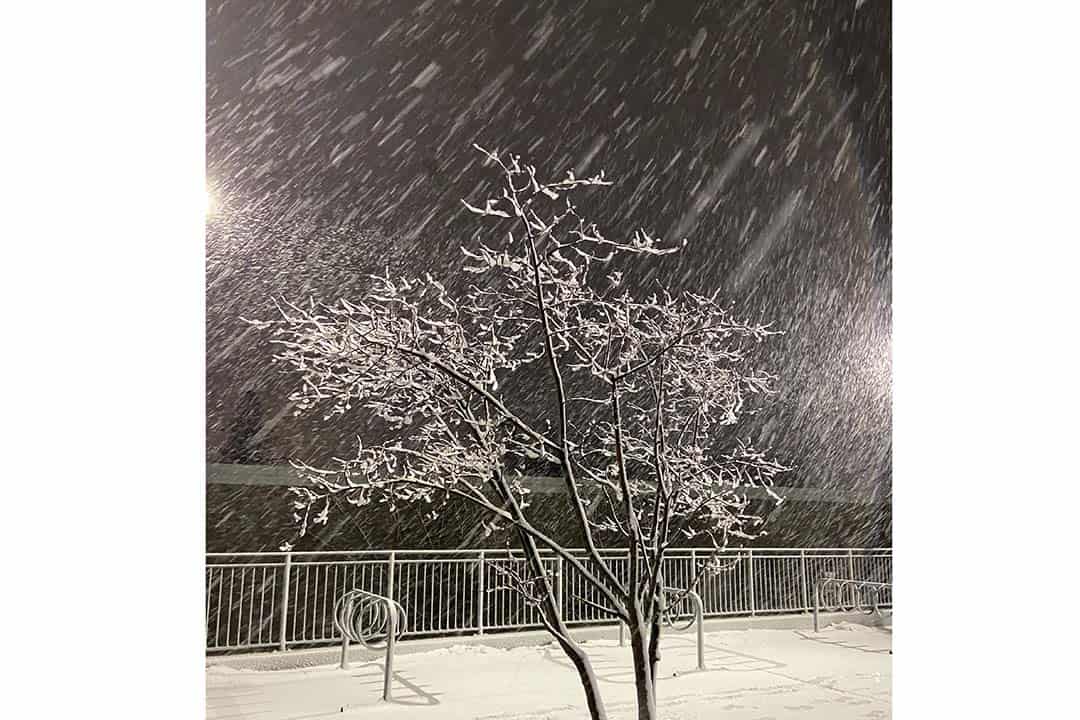From jokes about high cold tolerance to a cult-like reverence for hockey, a Canada without cold temperatures seems inconceivable. In a country that is deeply connected to its snowy winters, the climate crisis is having an irreversible influence that could alter winter landscapes forever. The snowy weather that Toronto has experienced in recent weeks might soon become an anomaly across Canada, because data from different sources shows the declining trends in the rates of snow.
What is happening?
Environment Canada has been collecting data from weather stations going as far back as the 1970s. 90 per cent of the stations have seen a decline in the presence of at least one centimetre of snow on the ground, while 99 per cent of weather stations projected an increase in average winter temperatures. Toronto’s proximity to the great lakes impacts the snowfall rate, nonetheless, the number of days with temperatures above freezing has increased in spite of this microclimate. Halifax‘s snow cover is also worsening, with on average a two-week decrease in the amount of snow cover.
Across Canadian cities, waking up to a snowy Christmas morning has become, on average, 13 per cent less likely. In the city of Toronto, the likelihood of a snowy holiday season between 1960 and 1984 was 56 per cent. Between 1997 and 2021, that rate dropped to 40 per cent — a whopping 16 per cent decline.
From 1948–2016, the average temperatures in Canada increased by around 1.7 degrees Celsius and, in Northern Canada, the average temperature hike is around 2.3 degrees Celsius. According to a 2019 report commissioned by Environment and Climate Change Canada, the temperatures in the country are increasing twice as fast, on average, as in the rest of the globe. Winters are starting later and ending earlier, which is causing cascading economical, social, and environmental effects.
Scientists at Environment Canada teamed up for a 15-year-long study to translate the stats into a tangible number. They found that in the past 39 years, snowfall in both Canada and the United States has dropped by about 4.6 billion tonnes per year. That’s the equivalent of two million Olympic-sized swimming pools.
Why is it happening?
Snow cover is the measurement of land with snow on the ground. It is closely linked to air temperature, and is dependent on seasonal cycles and can vary each year. Scientists are interested in this measurement because low snow levels can increase the risk of wildfires and alter hydrological systems. To figure out how snow cover has changed, both short-term and long-term changes need to be taken into consideration.
Looking at short-term changes, we could note that this year has been particularly warm, with January — the coldest month of the year — being seven to eight degree Celsius warmer in areas like London, Ontario. Meteorologists have attributed this decline to a jet stream, an air current that acts as a barrier between the cold north winds from the warmer air in the Gulf of Mexico. Its pathway has been moving north this winter and prevented the northern winds from making their way across Ontario, thus bringing warmer temperatures.
The long-term observed trends meanwhile show a steady snow cover decline. If snow levels are consistently lower each year, it cannot be attributed to natural causes. A few outlying years are to be expected, but if data collected from around four decades shows a downward trend, then something must be amiss.
Unsurprisingly, the culprit for the consistent snow cover decline is climate warming. As temperatures increase, more water evaporates, which leads to more precipitation. But while this might usually fall as snow, warmer average temperatures mean that this precipitation now falls in other forms such as rain, sleet, or freezing rain. For Toronto, an area near a large lake, there is a chance that as Lake Ontario stays unfrozen for longer, more water will evaporate.
Why is it an issue?
People across Canada are dealing with the consequences of less snow. Due to consistently low snow and quicker melting times, the City of Montréal has decided to adopt a new payment method for contractors by making payments based on the quantity of snow removed, rather than by how much snow falls. From snow farming in an Albertan ski resort to using snow guns in Québec, people are doing what they can to ensure activities like skiing can continue.
Warmer winters are affecting agriculture as well. Because winter thaws are now more common, a layer of ice tends to form on top of snow when it rains, making farmers concerned about plants suffocating in ice.
But beyond us humans, nature is a time-bound process. Delayed snowfall and increased evaporation as outlined above can impact the spawning time of fish, and decrease the amount of water available for use.
Snow is also Earth’s natural mirror. The Albedo effect is a process in which snow’s brightness reflects about 80 to 90 per cent of the sun’s rays. Without snow, the ground absorbs the sun’s rays, accelerating snowmelt even further. As the planet gets hotter, the best mechanism to protect against warming is also the most vulnerable to change.
Environment Canada estimates that snow cover will decrease by approximately 10 to 20 per cent by 2050. Actions, both individual and collective, are necessary to combat this downward trend. Snow is important to Canada but, more than that, it is needed for the planet. The cost of doing nothing would mean no winter wonderlands, no dashing through the snow — and a whole lot more ice, ice baby.


